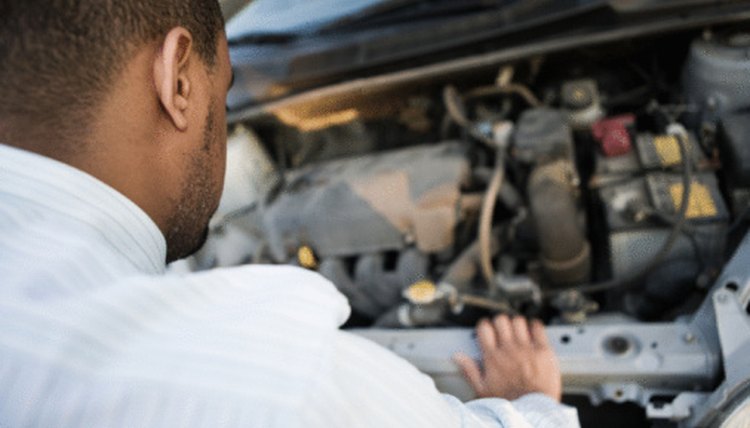How Do Push Rods Work?

Push rods are one of the few components in gasoline combustion engines that are not curved or offset in some way. A push rod is a straight stem with a roller ball at each end. Manufacturers produce these from high-tempered steel or chrome "molly," which is an alloy. Some push rods are fabricated in one piece, while others are fabricated in three pieces that include the stem with welded roller balls at each end. The engine will not start or run without push rods.
Function
The roller ball at the lower end of the push rod rides on the lobes of the camshaft. The upper ball seats into a recessed cup on the underside of a rocker arm. As the offset lobe of the cam contacts the lower ball, the push rod is forced up and lifts the rocker arm. This action opens an intake or exhaust valve in the cylinder head of the engine. As the cam turns farther, the push rod drops back to its original starting point. This relaxes pressure on the rocker arm and the valve closes.
Sizing
The length of a push rod is critical to proper operation of the rocker arm. A rod that is too short will not fully lift the rocker arm and in turn, the valve will not open fully. Efficient engine performance and a minimum of friction are achieved by using the precise length of push rods as intended for a particular engine.
Fabrication
Many high performance engine builders prefer one-piece push rods rather than three-piece push rods that have welded roller balls. Roller balls on one-piece push rods are machined to conform to the recessed cups in a rocker arm. This type of push rod is more expensive. However, the welded roller ball on the end of a three-piece push rod is vulnerable to breaking off in racing conditions.
Hydraulic Lifters
Hydraulic lifters are used in conjunction with push rods to operate the engine valves. Push rods for this type of system have a roller ball that contacts the cam lobe and a tapered end that fits into a hydraulic unit. The hydraulic unit performs the same function as a mechanical rocker arm. The application of hydraulic lifters is not confined to racing or touring car engines. Debates surrounding the benefits and drawbacks of hydraulic lifters remain ongoing.
References
Writer Bio
William Machin began work in construction at the age of 15, while still in high school. In 35 years, he's gained expertise in all phases of residential construction, retrofit and remodeling. His hobbies include horses, motorcycles, road racing and sport fishing. He studied architecture at Taft Junior College.
